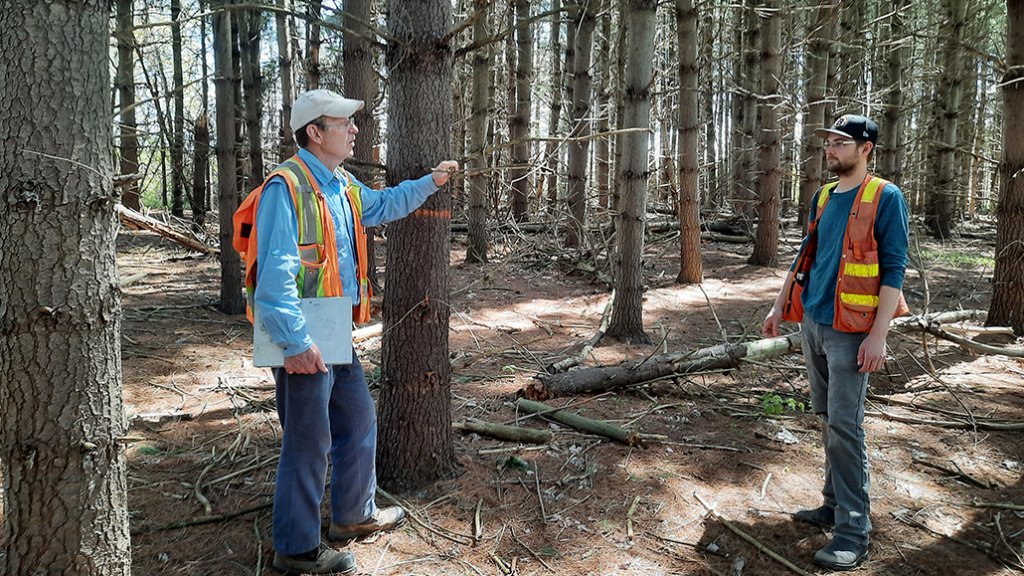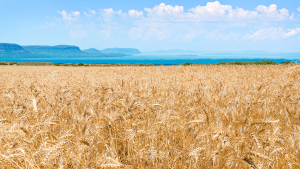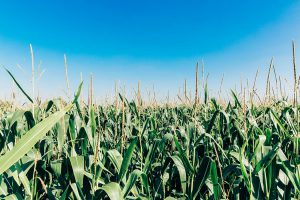Farmers and woodlots
A SUSTAINABLE PARTNERSHIP

TRAVELLING THE BACKROADS of rural Ontario, you will see many features across the landscape. While agricultural land is a dominant feature, there is one often a forgotten feature that is a part of many farms in rural Ontario, the woodlot.
The Ontario Woodlot Association (OWA) is a not-for-profit, membership-driven organization that supports its members who own and manage woodlots throughout the province.
John Pineau, OWA executive director, notes their members include individuals and organizations that support sustainability, good stewardship, and responsible forest management.
“The Association believes that private landowners have a vital role to play to ensure that sustainably managed forests remain a part of Ontario’s future,” says Pineau.
The OWA plays a role in many areas for woodlot owners including advocacy efforts with the government on key files.
“It all comes back to how we can provide timely and relevant information to our membership to help them successfully manage, enjoy, and get value out of their woodlots,” says Pineau.
The OWA also looks to internal knowledge sharing amongst members to better assist those that may not have a forestry background.
“We give our membership the opportunity to share information and experiences amongst themselves. Beyond the internal knowledge sharing, education is a big component of what we do — hosting workshops and courses on topics such as chainsaw safety, and identifying trees and plant species,” explains Pineau.
OWA MEMBERS
There are approximately 170,000 woodlot owners in Ontario, these woodlots can range in size from just a few acres to thousands of acres. Farmers are major private landowners in rural Ontario and many woodlots abut to agriculturally productive land. OWA’s current membership reflects this with 29 per cent of members active farmers, 19 per cent with a farm registration number, and 15 per cent having tenant farmers on their land. There is and continues to be a strong connection between agriculture and woodlots.
VALUE
Sustainably managed woodlots were once predominant across Ontario but over the years some farmers have forgotten about these valuable assets to their farm. To simplify it, there is a general lack of understanding and knowledge of the value of woodlots.
Art Shannon, vice president of the OWA and a retired farmer and logger, says that to get the long-term sustainable value out of your woodlot, you need to first have a plan. Like developing a nutrient management plan, Shannon suggests that a farmer’s first step should be developing a forest management plan.
“Having a qualified forest consultant develop a written forest management plan can provide a blueprint for success for the woodlot owner,” he says.
Without a proper plan, you risk mismanagement of your woodlot. Once your forest management plan is established, the next step is hiring a certified tree marker.
“The certified tree marker will follow your forest management plan like a blueprint and mark the trees desirable for harvest,” explains Shannon.
A good forest management plan entails doing what is right for the forest and harvesting trees that will improve the health of the forest while also maintaining biodiversity of the woodlot for birds, mammals, and amphibians. From that point, either one of these forestry professionals will recommend a logger that is going to treat your land, the woodlot, and you right.
The logger will work to harvest the marked trees and have them taken to a sawmill for further processing. Beyond the monetary value, a well-managed woodlot has several other benefits that can provide additional forms of value to a woodlot owner. A well-managed woodlot can offer an increase in forest biodiversity, conservation of wildlife habitat, even carbon sequestration and recreational usage.
Recently, pandemic pricing has opened everyone’s eyes to lumber prices, but the reality is, even before the pandemic lumber demand was already there.
While a hard maple takes 80 to 100 years to mature, a hard wood forest should have all ages represented at the appropriate ratio of young to mature.
“Some farmers have realized some excellent value, growing quality trees that can be harvested sustainably every 10 to 15 years,” says Shannon.
Identifying the value of a woodlot may not be readily apparent, but the OWA will help to provide the relevant information and resources to understand its potential. There is a strong community of woodlot owners to help.
There are many farmers who see their woodlot acres as being as much a part of their business as their crop’s acres. Managing a woodlot is very similar to managing a crop, ensuring that the plant has a viable environment to thrive and produce a quality, profitable product.
Sustainability is a key pillar of what we do as farmers, looking at the entire farm and its features as a system can help to unearth sustainable land management on all of your land.
If you are interested in becoming a member of the OWA, please go to www.ontariowoodlot.com/ to find out more information.
Michael Buttenham is the sustainability and environment lead for Grain Farmers of Ontario. •




















